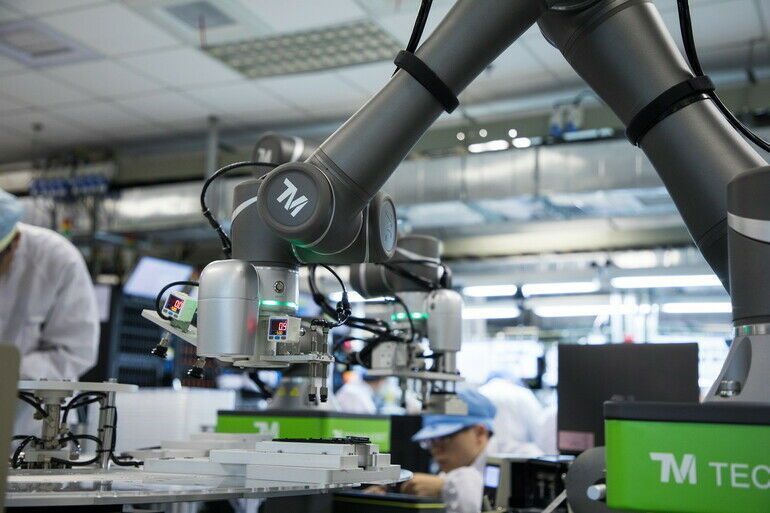Common problems of AGV in industrial applications
566FAQs for AGVs in industrial applications
DetailsSite Search

It is not news that manufacturers around the world are feeling the pressure to keep up with the high demands of the market. A scarce labor market, changes in consumer buying expectations, and supply chain disruptions are challenging manufacturing leadership to keep productivity stable enough to meet market demand, remain competitive, and quickly adapt to a volatile environment.
In response to these market forces, manufacturers are seeking technological solutions that support their workforce by eliminating human intervention in non-value-added or repetitive tasks to increase productivity.
Autonomous Mobile Robots (AMRs) help usher in higher productivity, not only playing a key role in reducing stress on human workers and freeing their time for value-added tasks, but also creating a safer work environment.
When evaluating an AMR for your environment, here are some key considerations to help ensure your new AMR is the right fit for your workplace.
autonomous navigation
Unlike alternatives such as automated guided vehicles (AGVs), which require predetermined routes, markers, or guides, and human intervention to change routes, autonomous mobile robots can navigate their environment autonomously. Arguably, how a robot moves autonomously is one of the most important considerations in evaluating AMRs. However, there are multiple types of navigation to consider on AMRs – the most common being laser and vision, often complemented by QR codes, mirrors, etc.
While all types of navigation have their uses, autonomous mobile robots equipped with laser-based, SLAM-based (simultaneous localization and mapping) technology are recommended. The reason is that this type of navigation is more flexible than its counterparts – making it easier for the robot to adapt to highly dynamic situations. In a rapidly changing environment like manufacturing, this adaptability is critical to ensuring solutions can scale with demand. However, not all laser-based technologies are created equal, so digging into the details is critical.
In addition to greater flexibility, laser-based navigation can help save implementation costs and reduce headaches down the road.
security function
Safety is one of the main draws of implementing AMR in your workflow. Alternative modes of transportation, such as forklifts, have a high accident rate and pose safety concerns. Statistics show that 90% of forklifts in the United States will have an accident during their life cycle, and about 35,000 people are seriously injured each year due to forklift-related accidents. In addition, manufacturing environments often require repetitive work that puts physical stress on workers and causes long-term damage. Not only can AMRs replace more accident-prone machines like forklifts, but they can also take over repetitive jobs that can cause injury.
While implementing AMRs will help create a safer work environment, a thorough hazard assessment of the robot is still recommended as it will work with human workers.
During the assessment process, suggested questions to ask include.
Make security a priority in your assessment and do your due diligence to ensure you have a solid understanding of what features are in place to ensure AMRs interact safely with your employees.
Battery Type and Life
Battery strength is an important consideration when evaluating robots. After all, the battery equals the reliability of the AMR. And, if productivity gains with AMRs are the goal, and the robot doesn’t work half the workday due to long charging times or short battery life, is it hitting the mark?
There are many techniques to optimize battery life. But starting with an AMR with a high-quality, reliable battery and charging parameters is the best way to maximize yield and uptime.
To help ensure your AMR has reliable battery life, you should ask your supplier the following questions.
While seemingly a small part of the overall AMR, the battery and its capabilities play a big role in the user experience.
payload capacity
AMRs have a wide range of payload capacities – typically 500kg and below and 1000kg and above. However, when considering AMR, take a forward-looking approach when assessing payload requirements. Just because you have a 500kg application now, doesn’t mean a 1000kg application is impossible. If you have larger payload applications in the future, you want the flexibility of the AMR to accommodate your business growth. agv car agv robot
Typically, the higher the payload and the larger the size of the AMR, the more expensive it is to implement. To help determine if you can get more flexibility at a lower cost and size of a payload robot, consider comparing the cost and size of an AMR to competing products.
There are many different styles and types of AMRs on the market today—forklifts, mobile pallet conveyors, goods-to-person, person-to-goods, towing, etc., each with different purposes and pros and cons. At the end of the day, it’s important to remember that AMRs are most effective when integrated into a comprehensive factory automation system. Mobile conveyors complement other key factory automation solutions, including conveyors, aluminum frames, linear motion systems, and more. It’s not just an AMR. It is an integral part of the automation ecosystem.
FAQs for AGVs in industrial applications
DetailsAGV intelligent storage system solution Using AGV trolleys to automatically transport pallets in narrow aisle shelf areas in automated warehousi...
DetailsWith the rise of concepts such as Industry 4.0 and China's intelligent manufacturing, as well as the disappearance of the domestic demographic divi...
DetailsAGV handling robots are quickly becoming the most important smart devices in the logistics industry. On a global scale, in order to resist the impact of KIVA robots on the logistics industry, ...
DetailsThis website uses cookies to improve your browsing experience. By continuing to use this site, you accept the use of our cookies.
Data collected from this website is processed and stored in the United States.
See Our Privacy Policy
Hello!Please login